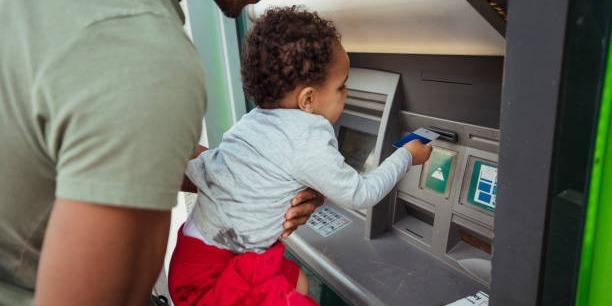In the era of cashless transactions, the financial learning curve for children has dramatically changed. From the days when piggy banks were our gateways to fiscal responsibility to now, when children as young as six can hold debit cards, the transition is striking. But as parents, educators, and society at large, the question lingerswhen is it appropriate for kids to have debit cards?
The Case for Early Financial Literacy
We are living in a credit-heavy world, one that has seen reductions in cash transactions and paper money. Studies show that by the age of seven, many children have already grasped the concepts of money and its associated behaviors. This begs the questionshouldn't financial literacy be advanced alongside these foundational understandings?
Starting Young: Benefits and Best Practices
When managed properly, introducing your child to a debit card at a young age can have substantial benefits. It paves the way for real-world education about budgeting, saving, and spending responsibly, all under the guidance of parents.
Implementing a chore system or allowance tied to the debit card can be a great way to introduce the concept of 'earning' in a digital world. Apps and cards designed for this purpose often include educational tools and progress tracking, turning financial management into a game with tangible results.
Breaking Down Barriers to Financial Access
For many families, the ability to easily send money to children for emergencies, school functions, or to teach them about familial financial management is a convenience necessary for their everyday lives. Debit cards for kids can democratize financial access, eliminating geographic and logistic barriers.
However, there are genuine concerns about the misuse of these cards, which can include unauthorized purchases, accidental overspending, or exposure to the digital marketplace without the knowledge to handle it appropriately.
Setting Safe Boundaries: Debit Cards and Parental Controls

The beauty of modern debit card solutions for kids is the robust parental controls that come with them. From setting spending limits to real-time expense monitoring, parents have a suite of tools at their disposal to teach children the ropes without risking a fall.
Establishing Trust Through Oversight
Transparency is key. By involving children in financial decisions and the monitoring of their spending, parents can foster trust and accountability. Regular reviews of spending habits can lead to critical conversations about wants versus needs and the importance of saving for long-term goals.
The Tech Side of Trust
Many of the platforms providing kid-friendly debit cards offer apps that both parents and children can use. These tools can turn what might be a daunting tasklearning to manage moneyinto a daily, approachable conversation made secure through technology.
The Role of Financial Education Outside the Home
While the introduction of debit cards for kids inherently involves parental guidance, educating institutions can play a pivotal role in financial literacy as well. Schools, extracurricular programs, and online resources offer additional support in teaching children about the ins and outs of money management.
Classroom to Checkout
Some school curriculums are evolving to integrate financial literacy, but hands-on experience is invaluable. School trips to banks, financial seminars, or programs that simulate real-life financial decision-making scenarios can further reinforce the lessons learned at home.
Fintech for Kids
A burgeoning trend is the emergence of fintech startups targeting financial education for children through gamified applications and interactive content. These platforms can engage children in practical, relatable scenarios that mirror their use of a debit card in the real world.
When Is the Right Time to Introduce a Debit Card?

The age at which a child is ready to handle a debit card is a multifaceted issue, influenced by their individual maturity, the parent's comfort level, and the availability of appropriate tools and education.
Maturity Metrics
Evaluating a child's readiness for a debit card extends beyond their age; it encompasses their understanding of money's value, their capacity for responsibility, and their reaction to both hypothetical and real financial choices. A key indicator of maturity is how they handle cash. If a child is meticulous with their cash savings, showing both restraint and planning, they may be ready for the next step. Additionally, their reaction to financial loss (such as losing money or making a poor purchasing decision) can offer insights into their readiness to manage a debit card, where stakes and temptations are higher.
Parental Comfort and Preparedness
Parental comfort and preparedness play a pivotal role when deciding to introduce a debit card to a child's financial toolkit. This comes down to how well parents believe they can educate and monitor their child's spending and saving habits. It's essential for parents to assess their own understanding of digital finance tools and the extent to which they can impart this knowledge to their children. Engaging in open dialogues about finances, demonstrating how debit transactions work, and discussing the implications of digital spending can lay a solid foundation.
Educational Tools and Resources
Fortunately, the market for digital financial education is rich with resources designed to empower both parents and children. From apps that simulate banking experiences to online courses tailored for young learners, these tools can make the concept of using a debit card both accessible and engaging. It's crucial for parents to vet these resources, ensuring they align with their family's values and financial practices.
The Balance of Independence and Guidance
Finding the balance between granting financial independence and providing necessary guidance is the linchpin in this process. It's about empowering children with the tools and knowledge to make informed decisions while ensuring they understand the value of money and the consequences of their choices. This balance will look different for every family, influenced by the child's maturity, the family's financial practices, and the educational resources available.
Conclusion:
The emergence of kid-friendly debit cards offers both challenges and opportunities for families. By leveraging parental controls, financial education resources, and gradual introduction and oversight, parents can set their children up for success in the digital marketplace. It's about finding the right balance between independence and guidance, fostering trust through transparency, and instilling a strong foundation of financial literacy in the next generation. With this approach, children can learn to navigate the digital world of finance with confidence and responsibility.

Understanding FICA Tax: A Comprehensive Guide

Understanding the Role and Responsibilities of a Lessee

Navigating the World of Membership Organizations and Their Impact on Health Insurance

Western Union: Everything You Need to Know for Smooth Transactions

Ways To Report 1099-MISC Box 3 Payments on Your 1040 for Tax Year

How YouTube Makes Money Off Videos

What Is Expected Value (EV)?

Different Ways Home Buyers' Agents Earn Their Money

The Ultimate Guide to 529 Plan Withdrawals for Private Schooling

Best Dental Insurance for Braces of 2023

In-Person or Online Loans: Finding the Perfect Fit for Your Needs
